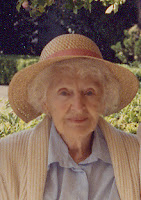Traffic Jams
Last year's "LaLa Land" movie managed to make a freeway traffic jam into a fun musical number.
This is pretty impressive when you consider that a real freeway traffic backup looks more like this and is not a particularly pleasant experience:
Our trip involved one of these unanticipated stops in Pennsylvania about 90 minutes after we got on the road. Here is the official report:
Interstate 78 has been reopened after a crash involving a passenger vehicle and
tractor-trailer in Greenwich Township, Berks County emergency officials said.
The crash happened about 1:40 p.m. in the westbound lanes ... at mile
marker 38.... Initial reports indicate the westbound car spun out of control during
heavy rainfall and was struck by the westbound rig. Two occupants of the car were
reported to be trapped in the vehicle. There were also unconfirmed reports of other
crashes in the same area the roadway.
Both westbound lanes were closed for three hours.
I learned later that something similar had occurred on the eastbound lanes of the same highway just three days earlier.
In fact, the highway is rather notorious and has its own Facebook page, the I-78 Commiserators Club, whose followers post regular notices about traffic snarls.
I do not enjoy sitting for hours in a parked car while thunderstorms rage, but there is no point in dwelling on such matters after the fact. This is just a warning for people planning a drive on I-78.
Innovative Cargo Trailers
We also noticed some truck trailers with non-traditional backsides like the one below.
Those back pieces are called trailer tails; they frequently are seen with side skirts under the trailer and between the wheels. The skirts and tails smooth the flow of air around a truck trailer, reducing drag.
Here's an industrial explanation of the effect.
There aren't many big rigs equipped with these appurtenances yet, but we'll probably see more of them over time.
In addition to cutting fuel costs for trucking companies, they'll reduce carbon use. Marginal efforts like these, adopted broadly, accrete to our common benefit. Good for the truckers.
The first such innovation of this kind may have been the positioning of wind deflectors atop semi cabs that pull cargo trailers.
I don't know when such deflectors began to be used, but I am pretty sure that it was sometime after the early 1970s, when "Big Joe's Trailer Truck" was released.
That book has been a favorite bedtime story for virtually every three-year-old boy for more than 40 years.
Here is a popular illustration from the book, which first was published in 1974. It shows Big Joe's truck and identifies all the truck parts by name.
As you can see, the truck has no wind deflector.
Perhaps in its next printing -- the 978th or so -- "Big Joe's Trailer Truck" will be updated with a wind deflector and will pull a container outfitted with trailer tails.







